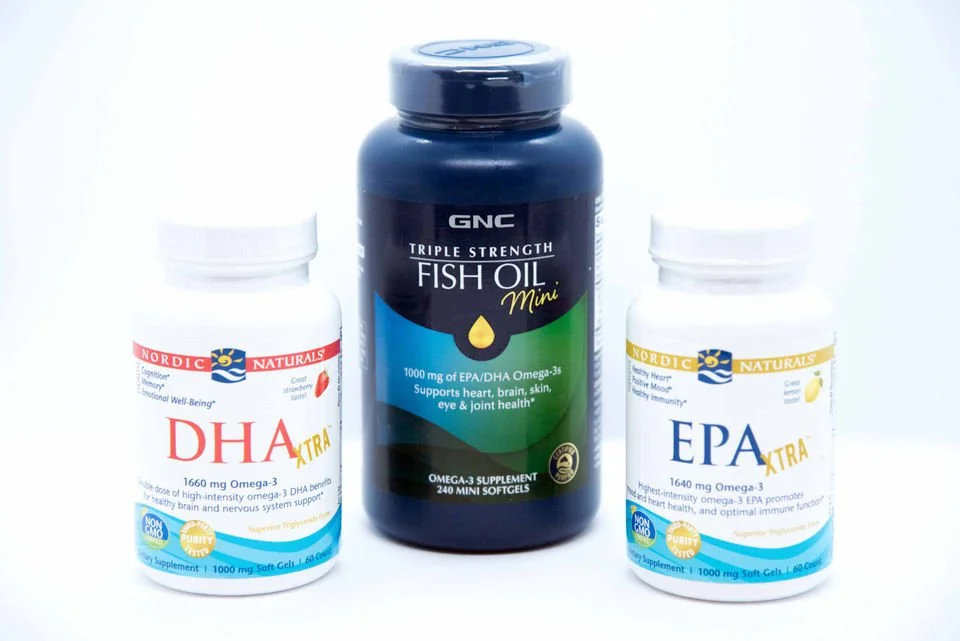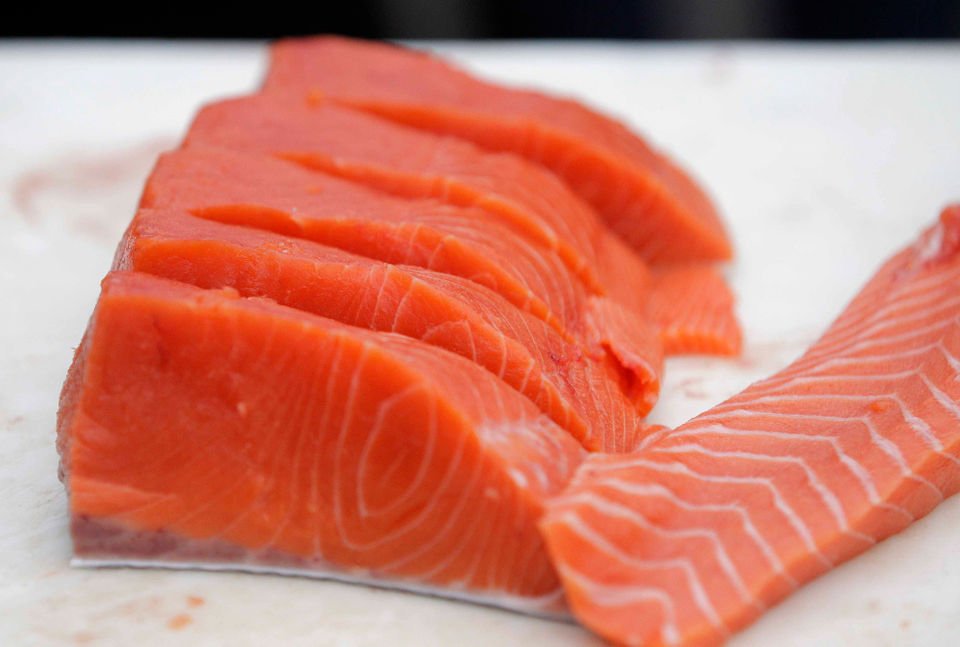Get your fish oil (Omega-3S) from seafood, not pills (as seen on NOLA.com)
Fish oil is the most popular natural, nonvitamin/mineral dietary product used by adults in the United States, according to the latest National Institutes of Health report. Nearly 8 percent of American adults, 19 million people, take an omega-3 supplement. These numbers are more than double the stats from just five years ago.
The reason is that omega-3s provide many health benefits. Are supplements the best way to get those benefits? Recent studies say no.
What Are Omega-3s?
Our bodies can’t make omega-3 fatty acids, so it’s essential that we get them through our diet.
Omega-3s EPA (eicosapentaenoic acid) and DHA (docosahexaenoic acid) are found in fish and shellfish. Many of the health benefits of fish oil are attributed to EPA and DHA specifically.
Omega-3s – EPA and DHA in particular – are essential for normal brain function, growth and development and to control inflammation. Deficiencies are linked to a greater risk of cardiovascular disease, certain cancers, mood disorders and inflammatory conditions.
A different type of omega-3, ALA (alpha-linolenic acid), is found in plant-based foods like flaxseed, chia seeds and walnuts. Read more about that here.
Studies have shown that supplements don’t necessarily provide the same level of benefit as getting the nutrient from food. More and more research shows that consuming fish, such as this wild-caught salmon at Bayona in the French Quarter (pictured; find the recipe here), and shellfish has more health benefits than taking omega-3 supplements.
istock
Food vs. Supplements
It is impossible to say that adding a single isolated supplement will provide the same benefits of real, whole food because we do not know how food, with all of its tiny molecules and micronutrients, affects the body.
Something else in that omega-3-rich fish may provide benefits as well, either in addition to, or in combination with omega-3s.
It’s also possible that eating seafood may give us enough omega-3s, and that supplementing isn’t necessary.
Also, eating grilled or baked seafood in place of less healthful foods is simply a healthier way to eat.
Teddie Taylor
How much omega-3s do we need?
The USDA’s Dietary Guidelines for Americans 2015–2020 are vague on omega-3s, recommending that adults consume 8 or more ounces of seafood (fish or shellfish) weekly.
The American Heart Association is more specific, recommending that we eat fish – “especially those rich in omega-3s” – twice a week.
The Food and Nutrition board of the National Academy of Medicine recommends 500 mg to 900 mg per week for children 8 or younger, and 1,000 to 1,600 mg for people ages 9 and older.
So, how much seafood should I eat?
Oily fish like salmon and mackerel are among the highest in omega-3s. Gulf seafood isn’t as abundant in omega-3s.
Here is a frame of reference for what’s a lot when it comes to omega-3s in seafood. The list shows estimations from most to least omega-3 content. (Source: USDA National Nutrient Database for Standard Reference. An asterisk indicates a high-mercury fish).
1,500 mg omega-3s per 3-ounce serving:
Salmon
Mackerel*
1,000 to 1,500 mg omega-3s per 3-ounce serving:
Ahi Tuna* and sardines
David Grunfeld, NOLA.com | The Times-Picayune
500 to 1,000 mg omega-3s per 3-ounce serving:
Canned white (albacore) tuna*
Rainbow trout
Oysters
200 to 500 mg omega-3s per 3-ounce serving:
Canned light tuna
Lobster
Snapper
Grouper*
Flounder
Mussels
Blue crab
Catfish
Less than 200 mg omega-3s per 3-ounce serving:
Blue crabs
Shrimp
Scallops
Catfish
Tilapia
Mahi mahi
Yellowfin tuna*
What about mercury?
If you choose the seafood above marked with an asterisk, eat them sparingly.
Small amounts of mercury can pose a risk to young children, unborn babies and the babies of nursing mothers, so for even low-mercury canned light tuna and salmon, the recommendation is no more than 2 to 3 servings per week of 3 to 4 ounces for folks who fall into those categories.
The Got Mercury? calculator by Turtle Island Restoration Network allows you to enter your body weight, along with the type and amount of fish or shellfish you’re eating for the week to determine whether you are exceeding the Environmental Protection Agency’s acceptable dietary limit for mercury.
Teddie Taylor
What if I want to take omega-3 supplements?
Read labels carefully when selecting supplements. Dosages can range from less than 100 mg omega-3s per serving (often for gummy-candy type of supplements) to 1,000 mg EPA and DHA for a single fish oil capsule.
In specific areas, supplements have been shown to provide benefits. For example, supplementing with high doses of omega-3s (such as the prescription fish oil medication Lovaza) has been shown to reduce triglycerides. Also, the supplements may help reduce inflammation and consequently may help relieve some symptoms of rheumatoid arthritis.
The side effects of supplements usually are mild (fishy burps, indigestion), though there’s conflicting evidence on risk of prostate cancer (some studies show an increased risk, others show a reduced risk).
Always talk with your physician before taking any supplements. Some interact with drugs such as those affecting blood clotting. People with seafood allergies should check with their physicians before taking fish oil supplements.
Ted S. Warren, The Associated Press
The bottom line
Eating omega-3-rich seafood is the best way to get the host of full-body benefits of the fatty acids, and it is best to choose low-mercury seafood. Studies show some benefits from supplements, especially for those who have a little or no seafood in their diet.
•••
Molly Kimball is a registered dietitian in New Orleans. She can be reached ateatingright@nola.com. Comment and read more atNOLA.com/eat-drink. Follow her on Facebook: facebook.com/mollykimballrd and Twitter: twitter.com/mollykimballrd.





